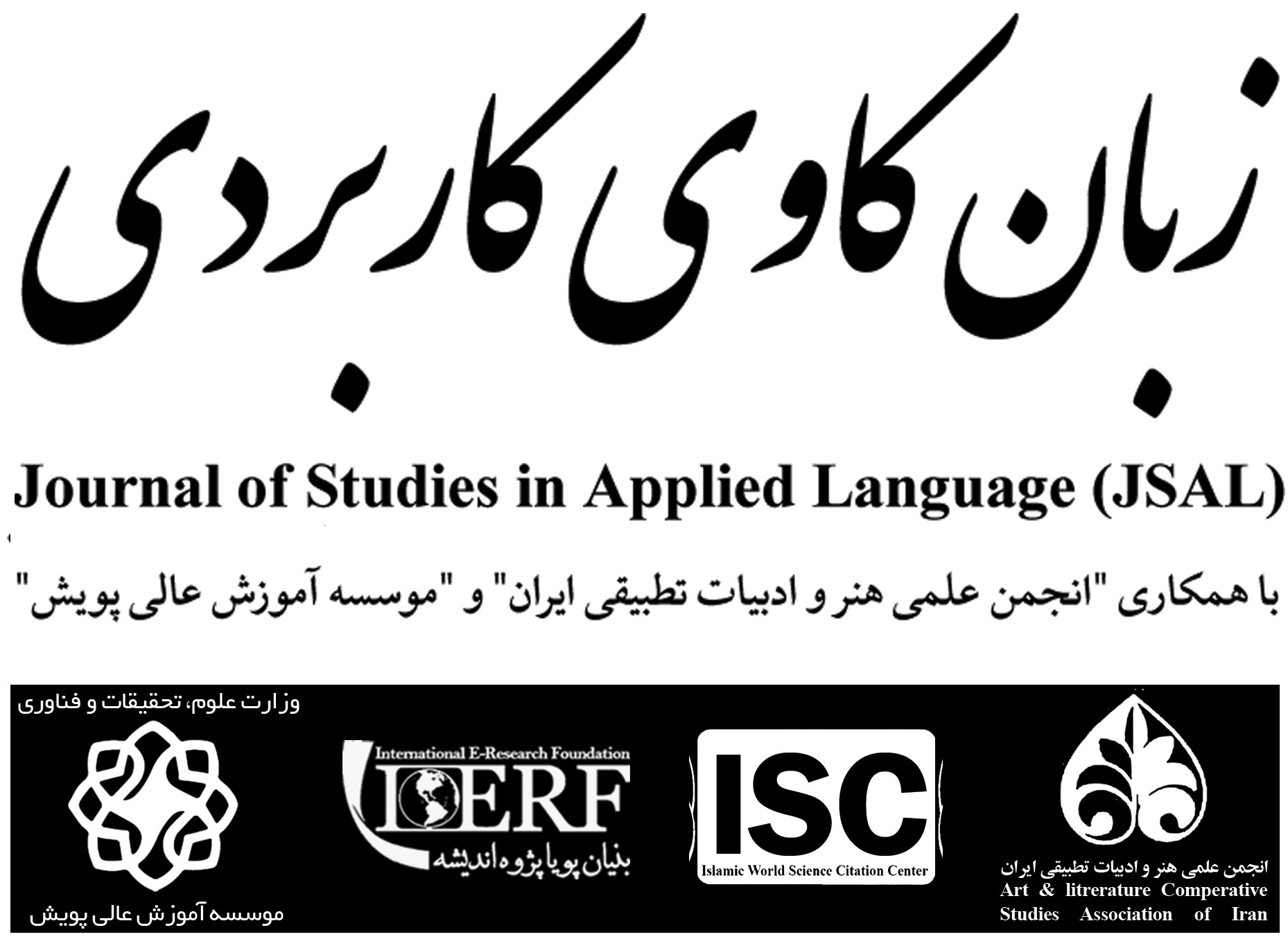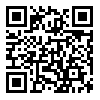<>
Volume 6, Issue 1 (3-2023)
JSAL 2023, 6(1): 101-122 |
Back to browse issues page
Download citation:
BibTeX | RIS | EndNote | Medlars | ProCite | Reference Manager | RefWorks
Send citation to:



BibTeX | RIS | EndNote | Medlars | ProCite | Reference Manager | RefWorks
Send citation to:
Mardani T. (2023). Marked and Unmarked Thematization Patterns: A Contrastive Study of Translated and Non-Translated Persuasive Texts [In English]. JSAL. 6(1), 101-122. doi:10.52547/jsal.6.1.101
URL: http://jsal.ierf.ir/article-1-25-en.html
URL: http://jsal.ierf.ir/article-1-25-en.html
Young Researchers and Elite Club, Isfahan (Khorasgan) Branch, Islamic Azad University, Isfahan, Iran , mardani_mars@yahoo.com
Abstract: (5382 Views)
Thematization is the process of arranging theme, rheme patterns in a text. The present study aims to investigate thematization strategies in translated and non-translated persuasive texts. To this end, the translated versions of one of the leading newspapers in the United States, The New York Times, and the original versions of Hamshahri newspaper (an Iranian counterpart) were chosen. Based on the qualitative and quantitative analysis of textual features and marked and unmarked themes of 12 translated and non-translated version of the opinion articles from The New York Times and Hamshahi (6 from each), this study aimed to find out how the translators organize their themes into marked and unmarked ones and how these organizations are related to the non-translated versions. The current research attempted to find out whether thematization patterns have any effect on the comprehension of sentences, or whether marked themes have any impact on the audiences and are these effects the same in the translations and non-translations. The findings revealed that thematization patterns can help the understanding of the texts. The results also showed that marked themes have an impact on the audiences. The results were relatively the same in the translations and non-translations.
Keywords: Thematization Patterns, Marked Theme, Unmarked Theme, Systemic Functional Grammar, Language Teaching
Type of Study: Research |
Subject:
Language Teaching
Received: 2022/03/28 | Accepted: 2023/02/3 | Published: 2023/03/1
Received: 2022/03/28 | Accepted: 2023/02/3 | Published: 2023/03/1
References
1. Alonso, B. I., & McCabe, A. (1998). "Theme-Rheme patterns in L2 writing". Didactica (Lenguay Literatureura), Vol. 10, pp 13-31.
2. Baker, M. (1992). In Other Words, London and New York. [DOI:10.4324/9780203133590]
3. Barzegar, H. (2008). "Differences between marked and unmarked translation of English thematized sentences regarding their effect on the audience". Retrieved January, 2, 2011.
4. Bell, R. T. (1991). Translation and Translating: Theory and Practice/Gen. ed. GN Candlin (Applied Linguistics and Language Study). L., NY: Longman Group UK Ltd.
5. McCabe, E. A. H., & Belmonte, I. A. (2001). "Theme, transitivity and cognitive representation in Spanish and English written texts". Círculo de lingüística aplicada a la comunicación, Vol. 7, No. 3.
6. Bloor, T., & Bloor, M. (1995). The Functional Analysis of English: A Hallidayan Approach. London: Arnold.
7. Bloor, T., & Bloor, M. (2013). The functional analysis of English: A Hallidayan approach. Routledge. [DOI:10.4324/9780203538098]
8. Brown, G., Brown, G. D., Brown, G. R., Yule, G., & Gillian, B. (1983). Discourse analysis. Cambridge university press. [DOI:10.1017/CBO9780511805226]
9. Butt, D., Fahey, R., Feez, S., Spinks, S., & Yallop, C. (2003). Using functional grammar: An explorer's guide.
10. Gouveia, C. A. (1997). Texts and Practices: Readings in Critical Discourse Analysis.
11. Catford, J. C. (1965). A Linguistic Theory of Translation; an Essay in Applied Linguistics: By JC Catford. Oxford UP.
12. Danes, F. (1974). "Functional sentence perspective and the organization of the text". Papers on functional sentence perspective, Vol. 23, pp. 106-128. Doi: 10.1515/9783111676524.106 [DOI:10.1515/9783111676524.106]
13. Derewianka, B. (2001). Pedagogical grammars: Their role in English language teaching. Analysing English in a global context: A reader, pp Vol 240-269.
14. Downing, A., & Locke, P. (2002). A university course in English grammar. Psychology Press.
15. Dubois, B. L. (1987). A reformulation of thematic progression typology. Text-Interdisciplinary Journal for the Study of Discourse, Vol. 7, No. 2, pp 89-116. Doi: 10.1515/text.1.1987.7.2.89 [DOI:10.1515/text.1.1987.7.2.89]
16. Eggins, S. (2004). Introduction to systemic functional linguistics. A&c Black.
17. Fairclough, N. (2001). Language and power. Pearson Education.
18. Fairclough, N. (1999). Global capitalism and critical awareness of language. Language awareness, Vol. 8, No. 2, pp. 71-83, Doi:. 10.1080/09658419908667119 [DOI:10.1080/09658419908667119]
19. Fairclough, N. (1995). Discourse analysis: The critical study of language. Londres/Nueva York: Routledge.
20. Fang, J., Song, Z., & Wu, C. (2008). "What may be Hidden behind a Translator's Choices: A Comparative Analysis of two Translations of The Art of War. Systemic Functional Linguistics in Use". Odense Working Papers in Language and Communication, Vol. 29, pp. 283-306.
21. Fowler, R. (2013). Language in the News: Discourse and Ideology in the Press. Routledge. [DOI:10.4324/9781315002057]
22. Fries, P. (1995). Personal View of Theme. Thematic development in English texts.
23. Gerrot, L., & Wignell, P. (1994). Making Sense of Functional Grammar: An Introductory Workbook. Australia: Gerd Stabler Antipoden Education Educational Enterprises.
24. Gosden, H. (1992). Discourse functions of marked theme in scientific research articles. English for specific purposes, Vol. 11, No. 3, pp. 207-224. Doi: 10.1016/S0889-4906(05)80010-9 [DOI:10.1016/S0889-4906(05)80010-9]
25. Gosden, H. R. M. (1996). A genre-based investigation of Theme: Product and process in scientific research articles written by NNS novice researchers. Department of English Studies, University of Nottingham.
26. Grzegorek, M. (1984). Thematizatiion in English and Polish: Poznan.
27. Hall, S. (2005). The rediscovery of 'ideology': Return of the repressed in media studies. In Culture, society and the media (pp. 61-95). Routledge. [DOI:10.4324/9780203978092-9]
28. Lyons, J. (1970). New horizons in linguistics (No. 410 N4).
29. Halliday, M. A. K. (1978). Language as social semiotic: The social interpretation of language and meaning. Hodder Education.
30. Halliday, M. A. K., Matthiessen, C. M., Halliday, M., & Matthiessen, C. (2014). An introduction to functional grammar. Routledge. [DOI:10.4324/9780203783771]
31. Halliday, M. A. (1994). An Introduction to Functional Grammar, London: Edward Arnold.
32. & Ruqaiya Hasan. (1976). Cohesion in English. London & New York: Longman. SHELL NOUNS, 131.
33. Halliday, M. (1994). An Introduction to Functional Grammar 2nd edition, London: Arnold.
34. Halliday, Michael and Matthiessen, Christian (2004) An Introduction to Functional Grammar, London: Hodder.
35. Halliday, M. H., & Hasan, R. (1984). "Cohesion in English". In Mei-yun Yue, Cohesion and the Teaching of EFL Reading. Forum, Vol. 31, No. 02, pp. 2-20.
36. Helidejs, H. H. M., & Hasan, R. (1976). Cohesion in English. London and New York: Longman.
37. Halliday, M. A. K., & Matthiessen, C. (2006). Construing experience through meaning: A language-based approach to cognition. Bloomsbury Publishing.
38. Halliday, M. A. K., Matthiessen, C. M., Halliday, M., & Matthiessen, C. (2014). An introduction to functional grammar. Routledge. [DOI:10.4324/9780203783771]
39. Hasselgård, H. (2004). Thematic choice in English and Norwegian. Functions of Language, Vol. 11, No. 2, pp. 187-212, Doi: 10.1075/fol.11.2.03has [DOI:10.1075/fol.11.2.03has]
40. Hodge, R., & Kress, G. R. (1993). Language as ideology, 2thEdition, London: Routledge.
41. Jalilifar, A. (2009). Thematic development in English and translated academic texts. Journal of Universal Language, Vol. 10, No. 1, pp. 81-111. Doi: 10.22425/jul.2009.10.1.81 [DOI:10.22425/jul.2009.10.1.81]
42. Jallilifar, A. R. (2010). The status of theme in applied linguistics articles. Retrieved January 2, 2011.
43. Jallilifar, A. R., & Khedri, M. (2011). Thematic development in English and translated academic text. Academic research genre in Asian context, pp. 335-364.
44. Martin, J. R. (1992). "Theme, method of development and existentiality: The price of reply". Occasional papers in systemic linguistics, Vol. 6, pp. 147-184.
45. Martin, J. R., & Rose, D. (2008). Procedures and procedural recounts. Genre relations: Mapping culture.
46. North, S. (2005). Disciplinary variation in the use of theme in undergraduate essays. Applied linguistics, Vol. 26, No. 3, pp. 431-452. Doi: 10.1093/applin/ami023 [DOI:10.1093/applin/ami023]
47. Nwogu, K., & Bloor, T. (2011). Thematic progression in professional and popular medical texts. In Functional and systemic linguistics (pp. 369-384). De Gruyter Mouton.
48. Prince, E. F. (1981). Towards a taxonomy of given-new information. Radical pragmatics.
49. Reid, J. M., Monaghan, P., & Ruxton, G. D. (2000). "The consequences of clutch size for incubation conditions and hatching success in starlings". Functional Ecology, Vol. 14, No. 5, pp. 560-565. Doi: 10.1046/j.1365-2435.2000.t01-1-00446.x [DOI:10.1046/j.1365-2435.2000.t01-1-00446.x]
50. Richards, J. C., & Schmidt, R. (2002). Longman dictionary of applied linguistics and language teaching. Harlow, UK: Longman.
51. Strauss, A., & Corbin, J. (1990). Basics of qualitative research. Sage publications.
52. Streiner, D. L. (2003). "Starting at the beginning: an introduction to coefficient alpha and internal consistency". Journal of personality assessment, Vol. 80, No. 1, pp 99-103. Doi: 10.1207/S15327752JPA8001_18 [DOI:10.1207/S15327752JPA8001_18]
53. Thompson, G. (2013). Introducing functional grammar. Routledge. [DOI:10.4324/9780203431474]
54. Wang, X. (2009). "Grammatical concepts and their application in foreign language teaching". Retrieved November, No. 19, pp. 335-364.
55. White, P. R. R. Appraisal (in Discursive Pragmatics, Handbook of Pragmatics Highlights).
56. Van Dijk, T. A. (2013). News analysis: Case studies of international and national news in the press. Routledge.
57. Van Dijk, T. A. (2015). Racism and the Press. Routledge. [DOI:10.4324/9781315682662]
58. Van Dijk, T. A. (1993). Analyzing racism through discourse analysis: Some methodological reflections. Sage Publications, Inc.
59. Ventola, E. (1995). Thematic development and translation. Thematic development in English text, pp. 85-104.
60. Yarmohammadi, L., & Amal-Saleh, E. (1995). Textual analysis of English and Persian written texts in contrast and its possible pedagogical implications. Fifteen Articles in Contrastive Linguistics & the Structure of Persian: Grammar, Text & Discourse, pp. 101-123.
61. Zhou, Y. F. (2006). "The interpersonal metafunction and theme in English and Chinese advertisement texts". US-China Foreign Language, Vol. 4, No. 5, pp. 46-50.
Send email to the article author
| Rights and permissions | |
 |
This work is licensed under a Creative Commons Attribution-NonCommercial 4.0 International License. |








